Gamal Abdel Nasser: The Egyptian Leader Who Nationalized the Suez Canal
Gamal Abdel Nasser (1918–1970) was the second President of Egypt and a key political figure in the Arab world during the mid-20th century.
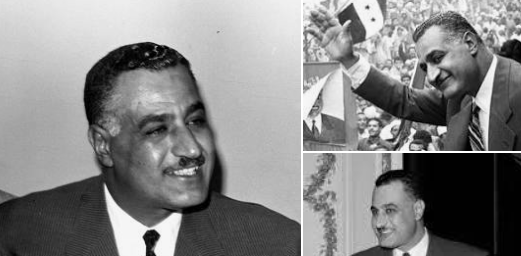
Below, WHE presents a brief overview of his life and presidency, including his reasons for nationalizing the Suez Canal in 1956:
Summary
Nasser graduated from the Royal Military Academy in Cairo. His early military career was marked by his participation in the 1948 Arab-Israeli War.
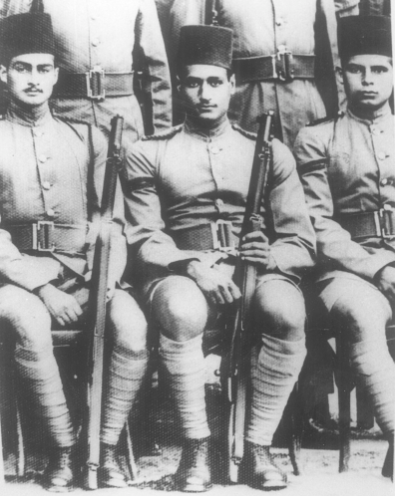
Nasser (center) with Egyptian actor Ahmed Mazhar (left) in army, 1940
This Egyptian leader was one of the leading figures of the Free Officers Movement that, in 1952, orchestrated a coup to overthrow King Farouk of Egypt. This revolution led to the establishment of a republic in Egypt.
After President Muhammad Naguib’s removal, Nasser became the Prime Minister and, in 1956, the President of Egypt—a position he held until his death in 1970.
Nasser was a staunch advocate for Pan-Arab unity. This ideology sought to unite Arab nations against colonialism and Zionism and for economic and military cooperation. His efforts in this direction led to the brief formation of the United Arab Republic—a union between Egypt and Syria that lasted from 1958 to 1961.
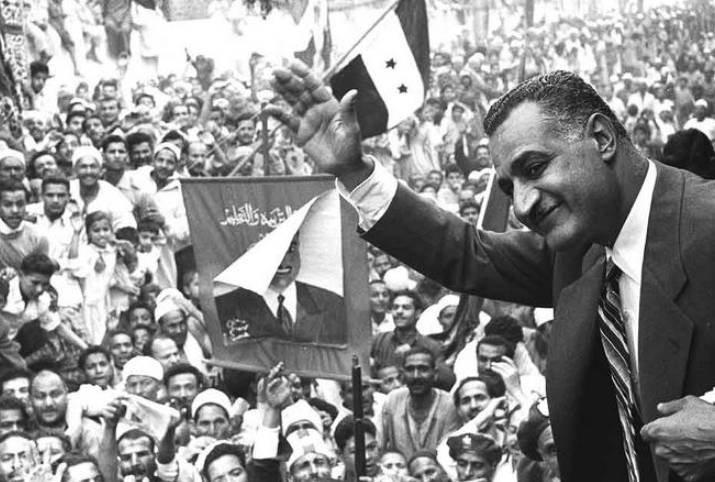
After a coup in 1952, Egypt was under the leadership of Gamal Abdel Nasser, who emerged as a pan-Arab nationalist and a vocal critic of Western imperialism in the Middle East.
Nasser’s Nationalization of the Suez Canal
The Suez Canal, which connects the Mediterranean Sea to the Red Sea, is one of the world’s most important waterways. It provides the shortest maritime route between Europe and the lands lying around the Indian and western Pacific oceans.
By the mid-20th century, the canal was owned by the Suez Canal Company, which was controlled by French and British interests.
Nasser sought funds to build the Aswan High Dam, a project vital for Egypt’s economic development. Initially, the UK, the US, and the World Bank offered financial support. However, due to Nasser’s increasingly nationalistic policies and Cold War considerations, they withdrew their offer.
On July 26, 1956, Nasser announced the nationalization of the Suez Canal, with the intent of using its revenues to finance the building of the Aswan Dam.
France, the UK, and Israel were deeply concerned by the nationalization. Israel saw Nasser as a direct threat; the UK and France were concerned about their declining influence and control over the canal. These concerns led to a secret meeting where they planned a joint military intervention.
On October 29, 1956, Israel invaded the Sinai Peninsula. Britain and France issued an ultimatum for Egypt and Israel to cease hostilities and then began bombing Egypt. British and French paratroopers were dropped near the canal zone.
The military intervention was met with strong opposition from both the US and the Soviet Union. The US, amidst Cold War tensions, was concerned about alienating Arab nations and pushing them towards the USSR. Additionally, the operation occurred during the Hungarian Revolution, and the USSR threatened to intervene militarily in Egypt.
Under immense international pressure, especially from the US, Britain, France, and Israel agreed to a ceasefire. A United Nations peacekeeping force was deployed to supervise the withdrawal of invading forces.
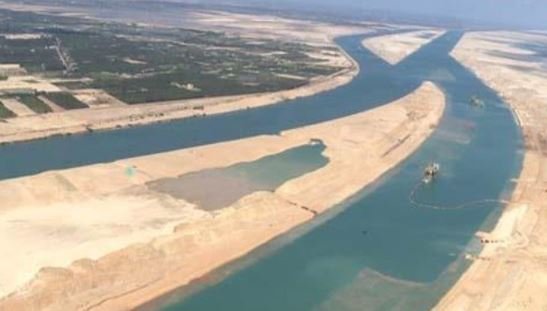
In 1956, Nasser nationalized the Suez Canal, leading to the Suez Crisis, where Britain, France, and Israel attempted a short-lived invasion of Egypt. With political pressure from the US and the USSR, the invading forces withdrew, marking a significant victory for Nasser.
Consequences of the nationalization of the Suez Canal and the crisis that followed
The crisis marked the decline of British and French colonial dominance in the region.
The crisis proved to be a massive boost for the Egyptian leader. Nasser emerged from the crisis with his stature significantly enhanced, becoming a hero in the Arab world.
The US’s role in resolving the crisis bolstered its influence in the Middle East at the expense of the old European powers.
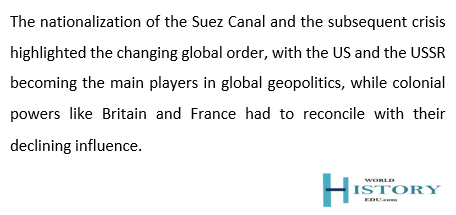
Other major facts about Gamal Nasser
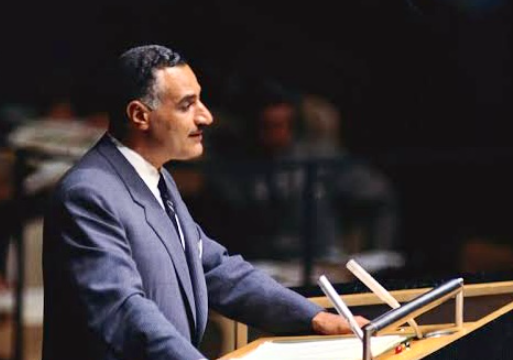
Image: Nasser’s tenure was marked by significant political and economic reforms, but it was also characterized by the suppression of political opposition and a lack of political freedoms. However, he remains a pivotal figure in the history of modern Egypt and the Middle East. Egyptian leader Nasser addressing the United Nations General Assembly, 1960
- Domestically, Nasser implemented various agrarian reforms that involved the redistribution of land to the peasantry, breaking the power of the traditional landowning class.
- His governance was marked by secularism, with efforts made to reduce the influence of religious institutions in public life.
- Despite his popularity, Nasser’s regime was also characterized by censorship, the suppression of political dissent, and imprisonment of political opponents.
- His charisma and powerful oratory skills made him a beloved figure amongst many in the Arab world. His speeches and radio broadcasts drew large audiences, and his vision for a united Arab nation resonated with many.
- He aimed for a self-sufficient economy through various state-led initiatives, leading to significant growth in the 1960s.
- Internationally, Nasser positioned Egypt as a leader in the Non-Aligned Movement, which sought to maintain a neutral stance during the Cold War.
- In 1967, tensions between Israel and its Arab neighbors culminated in the Six-Day War. Egypt, under Nasser’s leadership, suffered a devastating defeat, and Israel occupied the Sinai Peninsula.
- Despite the setback in 1967, Nasser remained a revered figure in Egypt and the Arab world. His policies and ideology continue to influence Arab politics and society. He died in 1970 and was succeeded by Anwar Sadat.
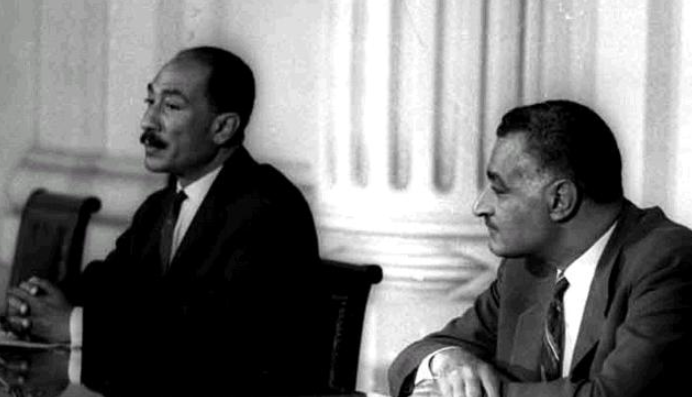
A leading member of Nasser’s cabinet, Anwar Sadat succeeded Nasser as president in 1970 and significantly departed from Nasser’s policies throughout his rule. Image; Anwar Sadat (left) and Nasser in the National Assembly, 1964.
Questions & Answers
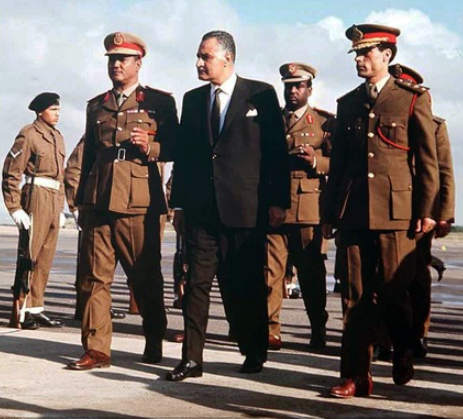
Nasser’s ideology of Pan-Arabism had a secular orientation, emphasizing Arab unity based on shared ethnicity and history rather than religion. Image: Jaafar Nimeiry of Sudan (left), Nasser, and Muammar Gaddafi of Libya (right) at the Tripoli Airport, 1969. Nimeiry and Gaddafi were influenced by Nasser’s pan-Arabist ideas and the latter sought to succeed him as “leader of the Arabs”.
Why did Nasser nationalize the Suez Canal?
Egyptian president Gamal Abdel Nasser’s decision to nationalize the Suez Canal in 1956 was influenced by a combination of political, economic, and strategic reasons:
The Suez Canal was a major source of income, with revenues primarily going to British and French shareholders of the Suez Canal Company. By nationalizing it, Nasser intended to divert these revenues to fund the construction of the Aswan High Dam. The dam was crucial for Egypt’s economic and agricultural development, promising improved irrigation and hydroelectric power. Western powers, including the U.S., the UK, and the World Bank, had initially offered to help finance the dam but withdrew their offers, pushing Nasser to seek alternative sources of funding.
Nasser was a staunch Arab nationalist and anti-imperialist. Nationalizing the canal was a bold statement asserting Egypt’s sovereignty over its resources, challenging British and French imperial interests. It was a move designed to galvanize support both domestically and across the Arab world.
During the Cold War, the Middle East was a theater of competition between the US and the USSR. Nasser maintained a policy of non-alignment, balancing between the two superpowers. The nationalization acted as a countermeasure against Western powers, especially after the U.S. withdrawal of financing for the Aswan Dam, and it moved Egypt temporarily closer to the Soviet sphere of influence.
Nasser sought to position himself as the leader of the Arab world. By taking control of the canal, he aimed to rally Arab nations around the cause of anti-imperialism and Arab unity.
Furthermore, the Egyptian leadership at the time believed that control over the Suez Canal, a critical maritime route, was bound to enhance the country’s strategic importance. While the canal was operated by an international company, Egypt lacked direct control over this key asset.
Finally, the presence of British troops in the canal zone had been a point of tension. Though a 1954 agreement led to the withdrawal of these troops, nationalizing the canal ensured that Egypt had full control over this strategic asset without foreign military presence.
What were the other significant challenges faced by Nasser during his presidency?
- The Six-Day War in 1967 with Israel was a major setback for Nasser. Egypt lost the Sinai Peninsula, and Nasser’s reputation suffered.
- Despite the nationalization and socialist policies, Egypt faced economic hardships, including unemployment and inflation.
- Nasser faced challenges from various groups, including the Muslim Brotherhood. His regime suppressed opposition, leading to arrests, torture, and a lack of political freedoms.
- The union with Syria lasted for only three years, as ideological and political differences led to its collapse.
- After leaning away from the West, Egypt became increasingly reliant on the Soviet Union for military and economic aid.
- Nasser’s involvement in the Yemen Civil War (1962-1970) by supporting Yemeni republicans against monarchists drained resources and was seen by many as a quagmire.

























